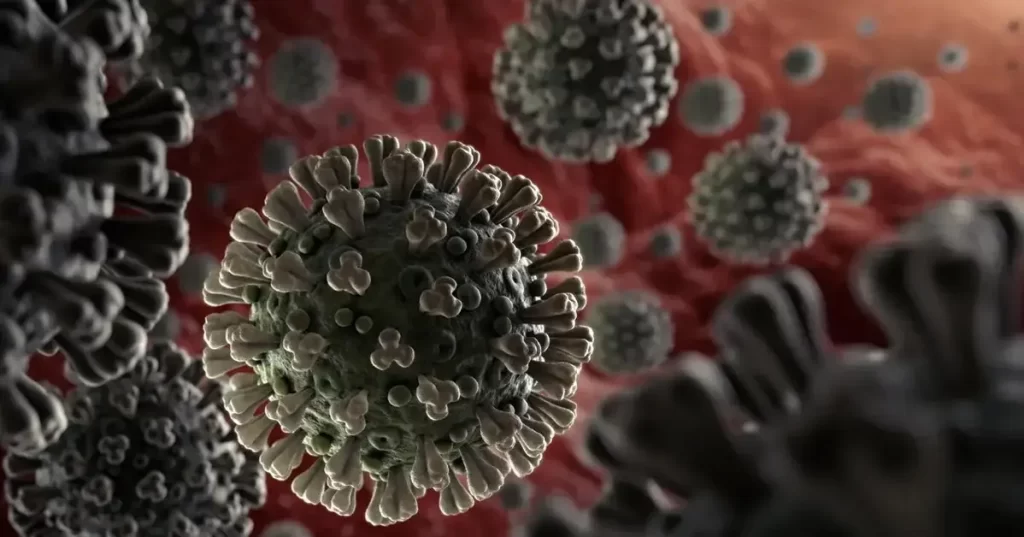COVID-19 Cases Rise in Summer 2024 with New Sub-Variants
The Current State of COVID-19
The COVID-19 pandemic, caused by the SARS-CoV-2 virus, has significantly impacted global health, economies, and daily life since its emergence in late 2019. Despite vaccination efforts and public health measures, the virus has continued to mutate, leading to the emergence of new variants and sub-variants. These mutations often result in changes in transmissibility, virulence, and vaccine effectiveness. As of summer 2024, there has been a marked increase in COVID-19 cases globally.
This surge is driven by several factors, including the relaxation of public health measures, waning immunity from vaccines and previous infections, and the emergence of new sub-variants. Countries that had previously managed to control the spread of the virus are now experiencing renewed outbreaks. Healthcare systems worldwide are facing increased pressure due to the surge in COVID-19 cases. Hospitals are reporting higher admissions, and healthcare workers are once again on the front lines, dealing with the influx of patients. The strain on resources, including medical supplies and personnel, is reminiscent of the earlier phases of the pandemic.
New Sub-Variants: A Closer Look
The SARS-CoV-2 virus continues to evolve through genetic mutations. These mutations can affect various aspects of the virus, including its ability to bind to human cells, evade the immune system, and transmit between individuals. The new sub-variants identified in 2024 exhibit mutations that have enhanced their transmissibility and, in some cases, their ability to partially evade immune responses. Several new sub-variants have been identified as contributors to the recent surge in cases.
These include Sub-Variant XBB.1.5, known for its increased transmissibility, Sub-Variant BA.4.2, which has shown an ability to evade immunity from previous infections and vaccinations, and Sub-Variant P.3.7, emerging in parts of Asia and associated with increased severity of illness. The effectiveness of existing vaccines against these new sub-variants is a critical concern. Preliminary data suggest that while vaccines continue to provide significant protection against severe illness and death, their effectiveness in preventing infection and transmission has been reduced. Booster shots and updated vaccines targeting these specific sub-variants are being developed and rolled out to address this issue.
Public Health Response
Vaccination remains a cornerstone of the public health response to COVID-19. Governments and health organizations are intensifying efforts to vaccinate the remaining unvaccinated populations and to administer booster shots. Updated vaccines designed to target the new sub-variants are being prioritized to enhance protection and curb the spread of the virus. Non-pharmaceutical interventions (NPIs), such as mask mandates, social distancing, and travel restrictions, are being reintroduced or strengthened in response to the surge in cases.
Public health officials emphasize the importance of these measures in conjunction with vaccination to control the spread of the virus. Effective communication is crucial in managing the pandemic. Public health authorities are working to combat misinformation and to ensure that accurate, up-to-date information reaches the public. Campaigns to promote vaccination, highlight the importance of NPIs, and provide guidance on how to protect oneself and others are being amplified.
Read More:
Societal and Economic Impacts
The resurgence of COVID-19 cases and the reimplementation of public health measures are once again affecting daily life. Schools, workplaces, and social activities are adapting to the evolving situation. Remote work and online learning are being reintegrated in many areas, and events are being postponed or held virtually. The economic impact of the new surge is significant. Industries such as travel, hospitality, and retail are experiencing renewed challenges as restrictions are imposed.
Governments are implementing economic support measures to assist businesses and individuals affected by the pandemic. The long-term economic recovery is contingent on controlling the spread of the virus and restoring consumer confidence. The ongoing pandemic continues to take a toll on mental health. The uncertainty, social isolation, and economic hardships associated with COVID-19 are contributing to increased rates of anxiety, depression, and other mental health issues. Mental health services and support systems are being expanded to address this growing need.
Research and Innovation
The scientific community is rapidly advancing in the development of new vaccines and treatments for COVID-19. mRNA technology, which played a pivotal role in the initial vaccine rollout, is being utilized to create updated vaccines targeting the new sub-variants. Researchers are also exploring other vaccine platforms and adjuvants to enhance immune responses. In addition to vaccines, therapeutic treatments for COVID-19 are evolving. Antiviral drugs, monoclonal antibodies, and other therapeutic agents are being studied and deployed to treat infected individuals.
The goal is to reduce the severity of illness, prevent hospitalizations, and save lives. Enhanced surveillance and monitoring systems are crucial in tracking the spread of the virus and identifying new variants. Genomic sequencing efforts are being scaled up to detect mutations in the virus and to understand their implications. Real-time data collection and analysis enable timely public health responses and informed decision-making.
Policy and Governance
Coordinated efforts at national and international levels are essential in managing the pandemic. Countries are collaborating through organizations such as the World Health Organization (WHO) to share data, resources, and best practices. International cooperation is critical in ensuring equitable access to vaccines and treatments. Governments are continuously adjusting policies to respond to the evolving pandemic. This includes updating vaccination strategies, implementing or relaxing public health measures, and providing economic support.
The balance between protecting public health and minimizing economic disruption is a key consideration in policy decisions. The pandemic has highlighted the need for long-term strategies to enhance global health security. Investments in healthcare infrastructure, research and development, and pandemic preparedness are being prioritized. Strengthening global health systems and improving access to healthcare are essential in mitigating the impact of future pandemics.
Conclusion
The rise in COVID-19 cases during the summer of 2024, driven by new sub-variants, underscores the ongoing challenges posed by the pandemic. While significant progress has been made in vaccination and treatment, the virus’s ability to mutate and evade immunity remains a critical concern. Public health responses, including vaccination campaigns, non-pharmaceutical interventions, and effective communication, are essential in controlling the spread of the virus. The societal and economic impacts of the pandemic continue to be profound, affecting daily life, mental health, and economic stability.
Ongoing research and innovation in vaccines and therapeutics offer hope for a future where COVID-19 can be managed more effectively. Coordinated efforts at national and international levels, coupled with long-term strategies to enhance global health security, are crucial in navigating the path forward. As we move through the summer of 2024, it is imperative to remain vigilant, adaptable, and united in our efforts to combat COVID-19. By learning from the past, embracing scientific advancements, and prioritizing public health, we can overcome the challenges posed by this ever-evolving virus and work towards a healthier, more resilient future.


